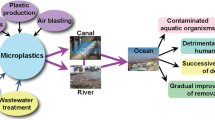Abstract
The effect of commercial processing of orange juice on pesticide residues was investigated, and the processing factors of all orange products and by-products were also determined. The pesticide residues were strengthened using field trials and detected using Ultra-performance Liquid Chromatography-tandem Mass Spectrometry (UPLC-MS/MS). The results showed that the pesticide residues were mainly distributed in orange peels, the reduction of residue levels ranged from 43.6 to 85.4% during washing process. One percent to 4.5% of initial residues contained in the squeezed juice, 7–94.7% of the total relative residues were distributed in pomace. Filtrating could further reduce all the residue levels, ranging from 96.0–99.4% relative to unwashed whole fruits. After sterilization, there was only 0.5–3.1% of the residues contained in Not from Concentrate juice (NFC juice). 0.2–7.1% of the total relative residues was contained in concentrated juice, comparing with the filtrated juice; however, the concentration of cypermethrin and prochloraz was decreased, but the other 3 pesticides were increased. The residue levels of imidacloprid and carbendazim in orange oil were reduced but abamectin, prochloraz, and cypermethrin were concentrated, and the concentrated factor was 28.214, 5.232, and 5.621, respectively.

Similar content being viewed by others
References
Abou-Arab AAK (1999) Behavior of pesticides in tomatoes during commercial and home preparation. Food Chem 65:509–514
Rose G, Lane S, Jordan R (2009) The fate of fungicide and insecticide residues in Australian wine grape by-products following field application. Food Chem 117:634–640
Sakaliene O, Koskinen WC, Blazauskiene G, Petroviene I (2009) Level and fate of chlorpropham in potatoes during storage and processing. J Environ Sci Health Part B 44:1–6
Chen C, Qian YZ, Chen Q, Tao CJ, Li CY, Li Y (2011) Evaluation of pesticide residues in fruits and vegetables from Xiamen, China. Food Control 22:1114–1120
Claeys WL, Schmit JF, Bragard C, Maghuin-Rogister G, Pussemier L, Schiffers B (2011) Exposure of several Belgian consumer groups to pesticide residues through fresh fruit and vegetable consumption. Food Control 22:508–516
González-Rodríguez RM, Cancho-Grande B, Torrado-Agrasar A, Simal-Gándara J, Mazaira-Pérez J (2009) Evolution of tebuconazole residues through the winemaking process of Mencía grapes. Food Chem 117:529–537
Zhang ZY, Liu XJ, Hong XY (2007) Effects of home preparation on pesticide residues in cabbage. Food Control 18:1484–1487
Burchat CS, Ripley BD, Leishman PD, Ritcey GM, Kakuda Y, Stephenson GR (1998) The distribution of nine pesticides between the juice and pulp of carrots and tomatoes after home processing. Food Addit Contam 15:61–71
Randhawa MA, Anjum FM, Ahmed A, Randhawa MS (2007) Field incurred Carbendazim and 3, 5, 6-trichloro-2-pyridinol residues in fresh and processed vegetables. Food Chem 103:1016–1023
Lin CS, Tsai PJ, Wu C, Yeh JY, Saalia FK (2006) Evaluation of electrolysed water as an agent for reducing methamidophos and dimethoate concentrations in vegetables. Int J Food Sci Tech 41:1099–1104
Cabras P, Angioni A, Garau VL, Minelli EV, Cabitza F, Cubeddu M (1997) Residues of some pesticides in fresh and dried apricots. J Agric Food Chem 45:3221–3222
Zabik MJ, El-Hadidi MFA, Cash JN, Zabik ME, Jones AL (2000) Reduction of Azinphos-methyl, Chlorpyrifos, Esfenvalerate, and Methomyl residues in processed apples. J Agric Food Chem 48:4199–4203
Lentza-Rizos C, Avramides EJ, Kokkinaki K (2006) Residues of Azoxystrobin from grapes to raisins. J Agric Food Chem 54:138–141
Kontou S, Tsipi D, Tzia C (2004) Stability of the dithiocarbamate pesticide maneb in tomato homogenates during cold storage and thermal processing. Food Addit Contam 21:1083–1089
Crnogorac G, Schmauder S, Schwack W (2008) Trace analysis of dithiocarbamate fungicide residues on fruits and vegetables by hydrophilic interaction liquid chromatography/tandem mass spectrometry. Rapid Commun Mass Spectrom 22:2539–2546
Crnogorac G, Schwack W (2009) Residue analysis of dithiocarbamate fungicides. Trends Analyt Chem 28:40–50
De Silva PMCS, Pathiratne A, Van Gestel CAM (2010) Toxicity of chlorpyrifos, carbendazim, carbofuran, mancozeb and their formulations to the tropical earthworm Perionyx excavatus. Appl Soil Ecol 44:56–60
Amvrazi EG (2011) Fate of pesticide residues on raw agricultural crops after postharvest storage and food processing to edible portions. In Tech, Greece
OECD (2008) OECD Guidelines for the testing of chemicals/section5: other test guidelines. Test No. 508: magnitude of the pesticide residues in processed commodities
Lehotay SJ, De Kok A, Hiemstra M, Van Bodengraven P (2005) Validation of a fast and easy method for the determination of residues from 229 pesticides in fruits and vegetables using gas and liquid chromatography and mass spectrometric detection. J AOAC Int 88:595–614
BfR (2009) BfR compilation of processing factors for pesticide residues (version 2.0), BfR information No. 028
Holland PT, Hamilton D, Ohlin B, Skidmore MW (1994) Effects of storage and processing on pesticide residues in plant products. Pure Appl Chem 66:335–356
Pappas C, Kyriakidis NV, Athanasopoulos PE (2003) Effects of storage conditions and fruit processing on the degradation of parathion methyl on apples and lemons. Food Addit Contam 20:375–379
Rasmussen RR, Poulsen ME, Hansen HCB (2003) Distribution of multiple pesticide residues in apple segments after home processing. Food Addit Contam 20:1044–1063
Jawale MR, Zanzad AA, Kukde RJ, Kambale RS (2005) Economics of rearing broilers on orange pomace based diets supplemented with enzymes. J Bombay Vet Coll 13:20–22
Acknowledgments
This work was supported by the Construction and Development of National System of Modern Agriculture (Citrus) Industrial Technology and the Research Project in Integrated Supporting Technologies to Pesticide Risk Evaluation (No. 200903054). We thank the Institute for the Control Agrochemicals of Chongqing for collaboration in field trials.
Author information
Authors and Affiliations
Corresponding author
Rights and permissions
About this article
Cite this article
Li, Y., Jiao, B., Zhao, Q. et al. Effect of commercial processing on pesticide residues in orange products. Eur Food Res Technol 234, 449–456 (2012). https://doi.org/10.1007/s00217-011-1651-1
Received:
Revised:
Accepted:
Published:
Issue Date:
DOI: https://doi.org/10.1007/s00217-011-1651-1




